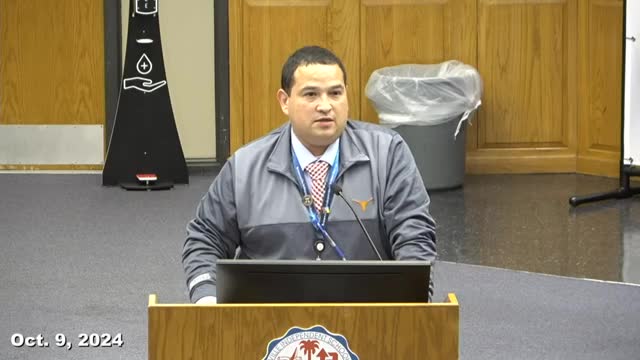School funding crisis threatens vital projects and programs
October 09, 2024 | BROWNSVILLE ISD, School Districts, Texas
This article was created by AI summarizing key points discussed. AI makes mistakes, so for full details and context, please refer to the video of the full meeting. Please report any errors so we can fix them. Report an error »

In a recent government meeting, officials provided a detailed overview of the funding structure for local school districts, emphasizing the distinction between two primary funding categories: Debt Service (INS) and Maintenance and Operations (M&O). The discussion highlighted how these funding mechanisms impact the district's ability to finance educational programs and capital projects.
The Debt Service funding, derived from community-approved bonds, is allocated for specific capital projects such as new construction, renovations, and technology upgrades. In contrast, the M&O funding covers everyday operational costs, including salaries and utilities, and is primarily sourced from state funding and local property taxes.
Officials noted that over the past decade, the district has increasingly relied on M&O funding to address INS-related expenditures, which has constrained resources available for daily operations. This shift has raised concerns about the sustainability of funding for essential services.
The meeting also revisited the Tax Ratification Election (TRE) process initiated in 2015, which allowed the district to adjust its tax rates to better support educational funding. The board adopted a higher M&O tax rate, which required community approval but did not increase overall tax burdens. This strategic move aimed to enhance funding for educational programs while maintaining the district's financial health.
However, the implementation of House Bill 3 in 2019 introduced tax rate compression, significantly affecting the district's revenue generation capabilities. Officials expressed concern that ongoing property tax relief measures have limited the district's ability to fund planned projects, including a proposed performing arts center.
The meeting concluded with a summary of various capital projects funded through the TRE, including upgrades to athletic facilities and safety resources. Despite the challenges posed by legislative changes and economic factors, the district remains committed to addressing the educational needs of the community while navigating the complexities of school funding.
The Debt Service funding, derived from community-approved bonds, is allocated for specific capital projects such as new construction, renovations, and technology upgrades. In contrast, the M&O funding covers everyday operational costs, including salaries and utilities, and is primarily sourced from state funding and local property taxes.
Officials noted that over the past decade, the district has increasingly relied on M&O funding to address INS-related expenditures, which has constrained resources available for daily operations. This shift has raised concerns about the sustainability of funding for essential services.
The meeting also revisited the Tax Ratification Election (TRE) process initiated in 2015, which allowed the district to adjust its tax rates to better support educational funding. The board adopted a higher M&O tax rate, which required community approval but did not increase overall tax burdens. This strategic move aimed to enhance funding for educational programs while maintaining the district's financial health.
However, the implementation of House Bill 3 in 2019 introduced tax rate compression, significantly affecting the district's revenue generation capabilities. Officials expressed concern that ongoing property tax relief measures have limited the district's ability to fund planned projects, including a proposed performing arts center.
The meeting concluded with a summary of various capital projects funded through the TRE, including upgrades to athletic facilities and safety resources. Despite the challenges posed by legislative changes and economic factors, the district remains committed to addressing the educational needs of the community while navigating the complexities of school funding.
View full meeting
This article is based on a recent meeting—watch the full video and explore the complete transcript for deeper insights into the discussion.
View full meeting
